|
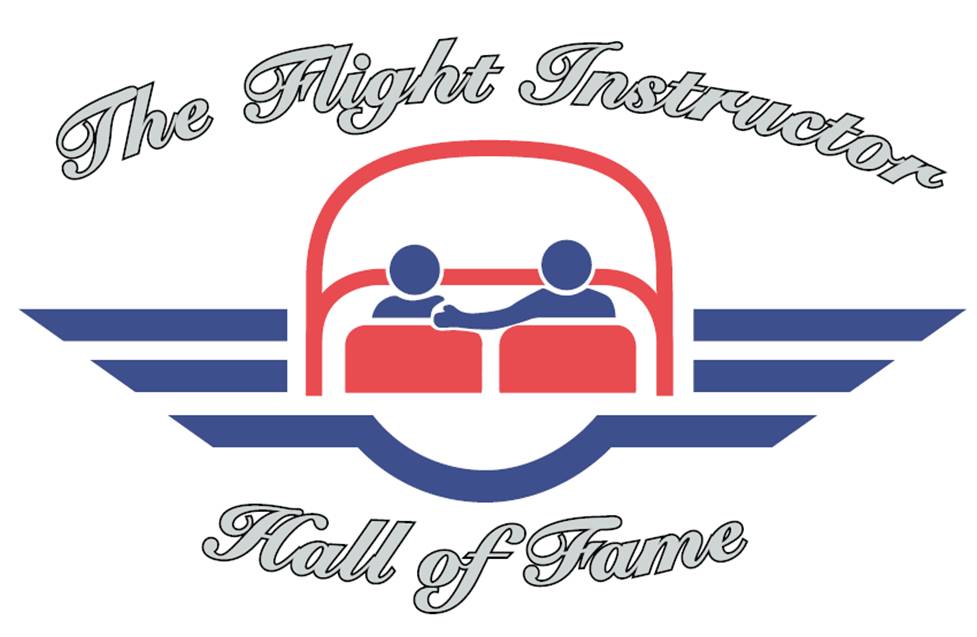
Someone you want to nominate? Click here for the Hall of Fame nomination form
Flight Instructors Hall of Fame Inductees:
 2024 Co-Inductee Doug Stewart 2024 Co-Inductee Doug Stewart
Doug Stewart, the 2004 National Instructor of the Year, is a full-time flight instructor focusing on real world IFR training conducted on multi-day training trips. Of limited means, Doug’s original motivation for becoming a flight instructor was so that he could fly without having to pay for it. But soon after he started teaching, he realized that flight instruction was his life’s calling. To date he has provided more than 13,500 hours of flight instruction. He has been a Master Instructor for 26 years and a Designated Pilot Examiner for more than 20 years. The Executive Director Emeritus of SAFE, Doug has served on the General Aviation Joint Safety Committee (GAJSC) for more than 10 years. He is also a subject matter expert for Pilot Workshops and Community Aviation. He has presented seminars to thousands of pilots from coast to coast and border to border and authored the monthly Vintage Instructor column for EAA’s Vintage Airplane magazine for several years. When not flying he is often found riding his bicycle.

2024 Co-Inductee Tim Tucker
Tim Tucker has done more to advance helicopter training around the world than any instructor in the post-Vietnam era. His expertise, knowledge and experience have been an invaluable asset in the training and evaluation of helicopter pilots for over 50 years.
Tim’s 8,800 hour flight instructor career is divided into three categories: FAA instructor, military instructor and FAA Designated Pilot Examiner. For the first 25 years of his career, he was able to take part in all three concurrently. His instructing career began in 1973 when he received his flight instructor certificate in Danbury, CT and began teaching in a Bell 47.
In 1979, Tim took delivery of the first Robinson R22 production helicopter and then endorsed the first student pilot for solo in an R22. In 1982, Tim went to work for the Robinson Helicopter Company as its first Chief Instructor and spent the next 38 years helping the R22 and later the R44 revolutionize the helicopter training industry. He authored the Robinson Flight Training Guide, which has become the foundation for all Robinson training and is used by instructors around the world. In 1983, Tim and Robinson founder Frank Robinson developed the Robinson Flight Instructor Safety Course, comprising both flight and ground training. Over the next ten years, the Safety Course was credited with cutting the R22 instructional accident rate by 66%. Because of this success, the course was opened to all pilots and renamed the Robinson Pilot Safety Course. Under Tim’s leadership, the Pilot Safety Course has become the gold standard in helicopter OEM (Original Equipment Manufacturer) training programs. It has received many awards and accolades from international government agencies, aviation organizations and aviation law enforcement agencies across the country. As of 2020, when Tim retired as Chief Instructor, the Safety Course has had over 21,000 attendees. As the R22 and R44 popularity spread around the world, Tim saw the need to provide owners and operators outside the US with the same high quality training. In 1992, Tim conducted the first Robinson Foreign Safety Course in Johannesburg, South Africa. Since then, Tim has taught 125 Foreign Safety Courses in 30 countries and 57 cities. Along the way, he has accumulated 17 temporary foreign pilot licenses enabling him to act as pilot-in-command and give instruction in foreign registered aircraft.
Tim became an FAA Designated Pilot Examiner in 1984 and has spent the last 40 years administering private through ATP, including initial CFI and instrument instructor, helicopter practical tests. He has given tests in 26 different helicopter types and when he retired in March 2024, had conducted 8,794 helicopter practical tests, which he estimates to be more than any other helicopter pilot examiner in FAA history. He has logged an incredible 7,514 hours as an FAA pilot examiner.
As a member of the US Army Reserve, Tim attended the US Army Instructor Pilot course at Ft. Rucker, AL in 1977 and the Army’s Instrument Flight Examiner course in 1986. During 20 years as an Army Reserve instructor pilot, Tim rose through the instructor ranks to become the Standardization Instructor Pilot, responsible for course content, standards and training for an aviation battalion comprising 150 pilots and 15 instructors. He administered yearly pilot/instructor proficiency checks, taught Nap-of-the-Earth (NOE) flight techniques, night vision goggle qualification, instrument flying and a US Army approved mountain flying course. Teaching in the Army’s iconic UH-I Huey, Tim accumulated 2464 US Army Instructor Pilot hours during his career.
Through the years, Tim has authored numerous training articles for magazines around the world, conducted frequent safety seminars throughout the US and with the US Helicopter Safety Team, produced several safety videos. He is responsible for naming, then promoting the “Vuichard Recovery” from the vortex ring state, which is now used by helicopter pilots worldwide. Tim’s many awards include the HAI Flight Instructor of the Year (2000), the Joseph L. Mashman Safety award (2005) and the Cumberbatch Trophy awarded by the UK Honourable Company of Air Pilots (2021).
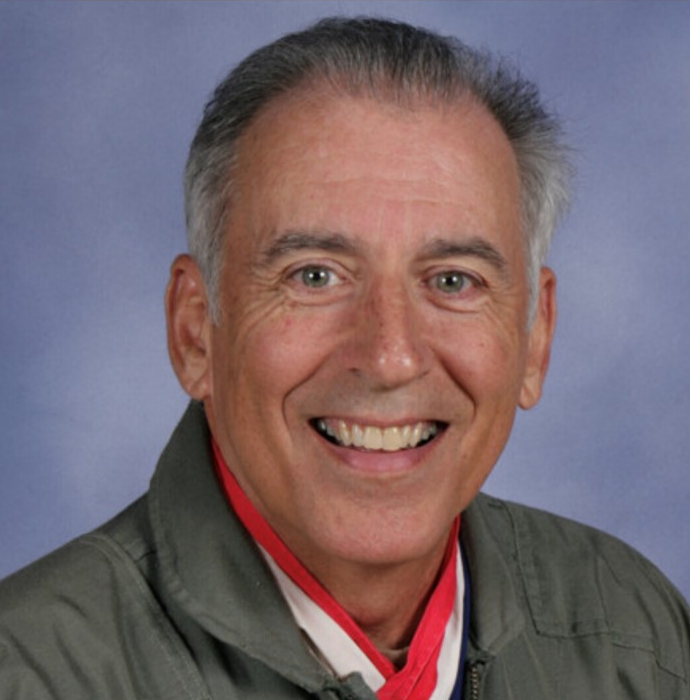
2023 Inductee Lieutenant Colonel Herbert W. “Bill” Powley, retired U.S. Air Force
Powley graduated from the Air Force Academy and served more than 23 years as a fighter pilot, flight instructor, and test pilot, including two tours in Vietnam flying 347 missions in the F-4 and A-7. After his retirement from the Air Force in 1991, Powley continued to share his passion for aviation by volunteering his time to train pilots. He founded FLIGHT Foundation (Flight Lesson Instructional Grants Helping Teens) and has personally raised over $1.9 million. He has flown almost 12,000 students on more than 4,000 discovery flights, most of which were free.
Powley has been an active member and leader in many aviation organizations, including the Air Force Association, Aircraft Owners and Pilots Association, the Experimental Aircraft Association and NAFI. In 2010 he received the A Scott Crossfield Aerospace Science Teacher of the Year Award for the from the National Aviation Hall of Fame. The Tennessee Aviation Hall of Fame (TAHOF) created a special award to recognize him that same year (Tennessee Aviation Person of the Year). In 2011 he received Tennessee's highest aviation recognition -the Career Contributions to Aviation Award and, in 2013, was inducted into the Tennessee Aviation Hall-of-Fame.
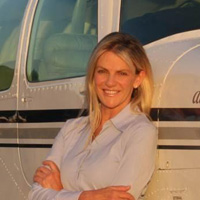 2022 Inductee Catherine Cavagnaro 2022 Inductee Catherine Cavagnaro
Catherine Cavagnaro is recognized as an expert on spins and aerobatics and teaches pilots from all over the United States and beyond at Ace Aerobatic School in Sewanee, Tennessee. She writes the “Flying Smart” column for AOPA Pilot Magazine that addresses topics of safety, efficiency, proficiency, and the science of flight. Catherine holds ATP, commercial and CFI-I certificates while also serving as a designated pilot examiner and FAA lead safety representative for the Nashville FSDO.
The General Aviation Awards Committee recognized Catherine in 2018 as the FAA Safety Representative of the Year, and the FAA Certificated Flight Instructor of the Year in 2020. In 2018, Catherine was also inducted into the Tennessee Aviation Hall of Fame and earned the Award for Exemplary Teaching by Sewanee: The University of the South where she is Professor of Mathematics.
Catherine’s aviation career began later than she would have liked but she is making up for lost time. She grew up fascinated by the military aircraft that approached Moffett Field over her house in Sunnyvale, California. Catherine experienced the joy of flight early during regular trips to Ireland with her mother but learning to fly wouldn’t be in the cards for her until much later. Her father passed his love of mathematics on to Catherine after which she earned a bachelor’s degree in mathematics from Santa Clara University.
During graduate studies toward her Ph.D. in mathematics at the University of Illinois at Urbana-Champaign, Catherine approached the local flight school for lessons; alas, her teaching assistant stipend sufficed to cover her living expenses and not much more. Still, she took her math homework to the airport just to watch the airplanes come and go.
While Catherine planned to settle back in California, a small liberal arts college with an airport on campus caught her eye. She accepted a position as Professor of Mathematics at Sewanee: The University of the South but busied herself for the next several years establishing her career as a professional mathematician. In May of 1999, she earned tenure at the university, gave birth to her first son, and immediately ran to the airport and signed up for flying lessons at the Sewanee Franklin County Airport (KUOS).
During her training toward a private pilot certificate, Catherine met aviation author and aerobatic instructor William K Kershner who took an interest in her mathematics background. She learned about the science of flight by assisting him with some of the mathematics in his aviation manuals. Catherine fell head over heels for aerobatics which she learned from Kershner. He introduced her to the University of Tennessee Space Institute where Catherine assisted with research projects, served as a test pilot and spin demonstration pilot, and studied graduate courses in aerodynamics and aviation systems.
After earning her flight instructor certificate, Catherine joined Kershner as an aerobatic instructor at his Ace Aerobatic School and continues the tradition of sharing safety with pilots in Sewanee since his passing in 2007. She also directs the Sewanee Flying Tigers, a flight school owned by Sewanee: The University of the South.
Catherine speaks around the country and online for the Federal Aviation Administration, AOPA, American Bonanza Society, National Association of Flight Instructors, and many other pilot organizations. She serves as a regular guest on Aviation News Talk with Max Trescott as well as an expert for Pilot Workshops’ “IFR Scenarios,” “VFR Scenarios” and other educational products.
With many other goals yet ahead, Catherine continues her education in aviation as well as her mission of promoting safety. In her spare time, she loves traveling the country with her sons Jack and Pete in their acrobatic Beechcraft Bonanza.
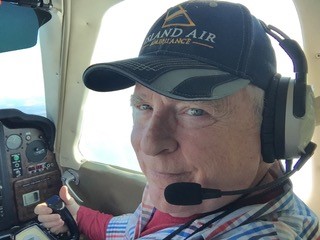 2022 Inductee Ron Timmermans 2022 Inductee Ron Timmermans
Ron Timmermans, fulfilled a 40-year professional career as an architect and project manager before devoting himself to aviation on a full-time basis. He has been an independent flight instructor since 1998. These days, he owns and manages AileRon T, LLC, and he flies a Beechcraft Bonanza co-owned with his wife Barbara – who originally inspired him to become a Flight Instructor.
Ron has logged more than 4,000 hours of dual instruction given, nearly 1,300 of those hours in the past five years. He instructs at locations throughout Florida, where he also serves as a mentor and advocate for emerging and young pilots and CFIs. Before relocating to Florida, Ron lived in North Texas and provided flight training in the Dallas/Ft. Worth area.
Ron is an ATP-AMEL, Commercial-ASEL, CFI-IA, MEI-IA, AGI-Instrument, and Remote Pilot. He is a NAFI Master CFI and Master Ground Instructor, a Gold Seal Instructor, and an American Bonanza Society (ABS) Master Aviator. Ron is particularly well-known in the Beech community due to his active involvement in the Beechcraft Pilot Proficiency Program (BPPP) and Bonanza/Baron Pilot Training (BPT) program.
Ron began providing training to Beechcraft pilots in 1998. In addition to providing instruction for Bonanza and Baron pilots, he later developed the BPT training curricula approved for WINGS credit by the FAA and has also been active in the Companion Training Course for those pilots’ significant others. Since then, Ron has been active in the BPPP program of the American Bonanza Society (ABS.), and he has authored more than 50 articles published in the ABS Magazine. He is a frequent consultant to owners and buyers of Beechcraft airplanes and conducts frequent Beechcraft transition training.
Ron has served as a FAASTeam Lead Representative for the Orlando FSDO and the North Texas FSDO. He has presented at more than 30 WINGS safety seminars and at aviation events throughout Florida and during EAA AirVenture in Oshkosh WI. He has also been a frequent presenter at AOPA’s Rusty Pilots Seminars, Safety Seminars, and Flight Instructor Refresher Courses. He is a founding director of the WINGS Industry Network, and he volunteered on the FAA’s WINGS Usability Working Group in 2020-2021.
Ron’s outreach activities include presenting NAFI MentorLIVE webinars for flight instructors and hosting broadcasts for Florida Aviation Network live-streaming events to international audiences. He is a regular presenter at ABS national conventions, EAA AirVenture, Sun ‘n Fun, and numerous other aviation events. Ron is a contributing member of AOPA, EAA, NAFI, SAFE, ABS, BPT, BPPP, and Quiet Birdmen. In 2021 he was named the National Certificated Flight Instructor of the Year.
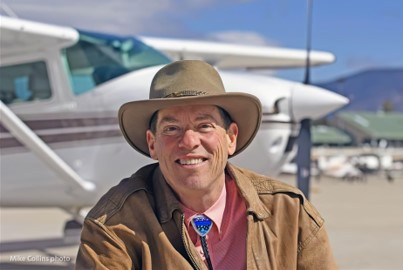 2021 Greg Brown: 2021 Greg Brown:
Greg Brown's passion for piloting is obvious to anyone who’s read his popular aviation books, The Savvy Flight Instructor, The Turbine Pilot's Flight Manual, Flying Carpet, You Can Fly! and Job Hunting for Pilots, who listens to his Cockpit Adventures from the Flying Carpet Podcast, or who followed his long-running "Flying Carpet" aviation adventure column in AOPA’s Flight Training magazine.
A pilot since 1972 and CFI since 1979, Greg was 2000 Industry/FAA National Flight Instructor of the Year, winner of the 1999 NATA Excellence in Pilot Training Award, and the 2013 AOPA Let's Go Flying Award. In 1997 he was designated the first-ever Master Flight Instructor.
Along with personally delivering thousands of hours of flight instruction, Greg has long employed mass media to support larger audiences at every level of pilot accomplishment.
In addition to twenty years as AOPA Flight Training columnist, he contributed countless flight-training-related articles and columns to NAFI Mentor, Aviation for Women, Flight School Business News, AOPA Pilot, Be-a-Pilot Newsletter, and Airport Business Journals, and syndicated columns to several independent websites.
Greg’s book, The Turbine Pilot’s Flight Manual, coauthored with Mark J. Holt, was the first to comprehensively address “all the basics of turbine aircraft in one book.” Now in its fourth edition, it has long been required reading for pilots stepping up to turbine aircraft.
The Savvy Flight Instructor: Secrets of the Successful CFI, now in its second edition, was the first and still only dedicated book on how to succeed in the flight training business, from marketing to profitability to customer satisfaction. This book was offered as a membership premium by the National Association of Flight Instructors.
Greg wrote Flying Carpet: The Soul of an Airplane, to introduce and attract general audiences to the fun and adventure of piloting, while sharing important safety lessons with those already certificated. He was named Barnes & Noble Arizona Author of the Month for this book, which some reviewers compared to road-trip classics such as Pirsig’s Zen and the Art of Motorcycle Maintenance, and Kerouac's On the Road. That tradition continues with his Cockpit Adventures from the Flying Carpet Podcast.
We all know the importance of networking to cinch a cockpit position, and Greg’s book Job Hunting for Pilots shares methods and inspiration for “networking your way to a piloting job.” (Now in its second edition.)
You Can Fly! (with Laurel and Tom Lippert) targets aspiring pilots with a simple primer and compelling color photos on the process and privileges of earning a private, recreational, or sport pilot certificate.
A pioneer in supporting pilot training via social media, Greg founded and hosted the Student Pilots and Aviation Careers Forums on America Online starting in 1997. His popular Greg Brown’s Student Pilot Pep Talk Group on Facebook continues that tradition today, offering encouragement to pilots-in-training to reverse the industry’s traditionally high dropout rate.
Over the years Brown has presented extensively in person and online on topics including flight training techniques, business practices and marketing; aviation adventure, and pilot careers. Among them: NATA’s highly regarded Flight Training Business Success Seminars.
An avid photographer from childhood, Greg has shot aerial photos ever since earning his wings. Many have illustrated his Flying Carpet column and book, as well as museum and commercial art exhibits. Says Greg, “I find aerial landscape photography to be a marvelous tool for attracting new people into aviation.”
Greg earned an MFA in Industrial Design and a BS in Architectural Studies from the University of Illinois at Urbana-Champaign, following Integrated Liberal Studies at the University of Wisconsin-Madison. As a graduate student, he conducted design research at the University of Illinois Aviation Research Lab on then-cutting-edge electronic-flight-display symbology. He is an emeritus member of the Dean's Advisory Council, College of Arts & Letters, Northern Arizona University.
Brown holds an Airline Transport Pilot certificate with Boeing 737 type rating, and Flight Instructor certificate with all fixed-wing aircraft ratings including glider. Along with flight training he has flown professionally in both scheduled and corporate aviation, and currently pilots his Cessna Skylane, the Flying Carpet, extensively for personal business and pleasure.
Those bewildered by Greg’s schizophrenia between arts and aviation, may gain some understanding from his favorite aviation quote, taken from The War in the Air, 1922, by Sir Walter Raleigh: “The engine is the heart of an aeroplane, but the pilot is its soul.”
Visit Greg Brown’s web site at www.GregBrownFlyingCarpet.com.
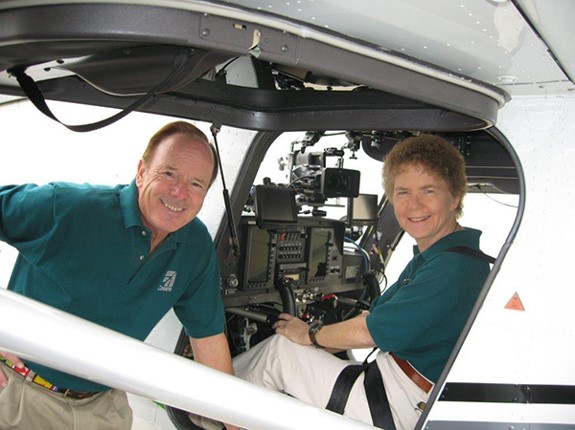 2021 John and Martha King: 2021 John and Martha King:
John and Martha King´s use of technology and clear, simple, and fun teaching have made aviation knowledge more accessible to pilots throughout the world.
After a dismal failure in a business for which they did not have a passion, John and Martha King decided to relax and indulge their love of flying for a while. In the early 1970s, they began teaching flying to mark time while looking for a "serious business." After teaching live seminars for over a decade they put their courses on video and began to revolutionize the flight training industry.
Today their company, King Schools, Inc which started in a spare bedroom in the Kings´ house, operates out of a dedicated complex in San Diego, California that includes a video and software production facility.
Over more than 40 years, King Schools has delivered many millions of courses to pilots in training. Through intimate video instruction John and Martha King have taught more pilots than anyone in the history of aviation—for many years teaching more than half the pilots in the United States learning to fly. It's no surprise that pilots throughout the world know John and Martha and regard them as their personal aviation mentors.
King Schools continues to transform pilot training by pioneering the development of multimedia training programs on many aviation subjects including ground-breaking programs on aviation risk management.
Through the years, the Kings have retained their enthusiasm for flying. They fly their own Dassault Falcon 10 jet wherever they go, swapping captain and copilot duties on each leg. They have flown as pilots in every continent of the world except Antarctica, including a trip completely around the world via the length of Russia.
In September of 1994 John and Martha became the first and only couple to both hold every category and class of FAA rating on their pilot and instructor certificates. Martha is the only woman to achieve this complete ratings sweep. They remain active in many categories, regularly flying everything from jets to piston airplanes and helicopters. They have enjoyed periodically serving as back-up pilots for the Fujifilm blimp. They have flown the blimp over such events as the Kentucky Derby, the Davis Cup, the Super Bowl, the U.S. Open tennis tournament, and the Experimental Aircraft Association convention at Oshkosh, Wisconsin. Their airship adventures have been part of national television coverage on the Fox, ESPN, CBS, and USA networks.
The Kings appear frequently on national TV as aviation experts. They also have starred in numerous video presentations on Microsoft´s Flight Simulator program providing instruction for the "Getting Started" Wizard and for numerous informational topics. Plus, they were featured on CNN's "Business Unusual."
John and Martha have been champions for the cause of improving the risk management practices of general aviation pilots and they speak to thousands of pilots each year on aviation safety. They work with the FAA's National Aviation Safety Program in producing safety videos. They also volunteer their time to speak to college classes on starting a small business.
For many years both John and Martha served on the Board of Directors of the San Diego Air and Space Museum and of the Charles A. and Anne Morrow Lindbergh Foundation. John is previous Chairman of the Lindbergh Foundation, and they are now both on the Honorary Board. Martha was formerly the Chair of the Chancellor´s Community Advisory Board of the University of California, San Diego.
2020 - no inductee
2019 - no inductee
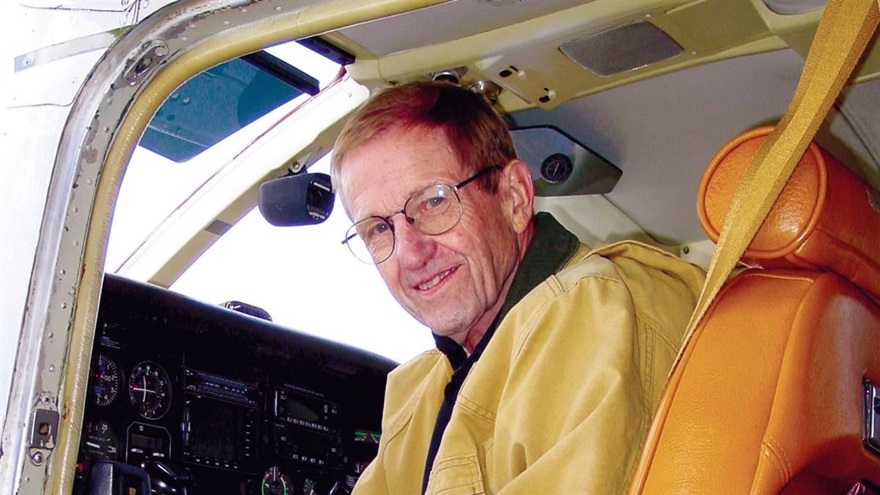
2018 Richard L. Collins:
Richard L. “Dick” Collins, a prolific aviation journalist whose career spanned 60 years. Collins wrote his first aviation article in 1947 when he was just 13 years old, for Air Facts, his father Leighton Collins’ magazine. He joined the staff of that publication full time in 1958 after serving for a time in the U.S. Army and as chief pilot for Ben M. Hogan Co., a highway construction company based in Little Rock, Arkansas.
That first article was Collins’ personal account of piloting an Ercoupe, at the time a relatively new light general aviation airplane. He would go on to earn his pilot’s license a few short years later, stirring an inexhaustible enthusiasm for flying that continued for the next 57 years as he amassed 20,000 hours in the air, many of them famously at the controls of his Cessna P210, which he wrote about often in the pages of Flying. He voluntarily hung up his wings for good at age 74, but continued to author blog posts for Air Facts Journal, an online publication he helped create in 2011.
Collins joined the staff of Flying in 1968, rising to become its 10th editor-in-chief in 1977 and remaining with the magazine until 1988. He then spent two years as editor-in-chief and publisher of AOPA Pilot, the magazine of the Aircraft Owners and Pilots Association. He returned to Flying as editor-at-large with a cover blurb on the November 1993 issue proclaiming “Richard Collins Is Back On Top.” It was a play on the title of his “On Top” column, in which he ruminated on the safety issues of the day in his folksy, plain-spoken style, never shying away from controversy or the chance to make his audience think more deeply about their own flying.
Through his career, he wrote thousands of magazine articles and columns, authored numerous books on weather flying, air traffic control and flight safety, created educational videos. Biographical Information originally published in Flying Magazine (see here for article), photo courtesy of John Zimmerman, President of Sporty's Pilot Shop.
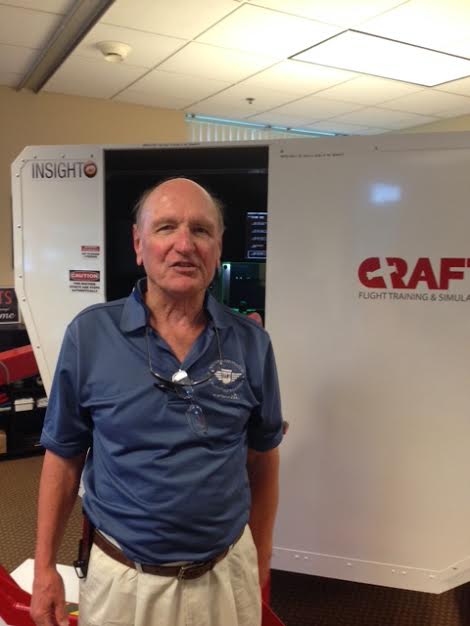 2017 Wallace J. Moran: 2017 Wallace J. Moran:
Moran has previously been honored as the 2013 recipient of NAFI’s Jack J. Eggspuehler service award among other accolades.
Moran started his aviation career as a general aviation flight instructor and later worked in the airline industry as a pilot and training instructor. he was a FAA check airman on many airline aircraft, including the boeing 747, which he flew for 12 years, and the boeing 767. He also spent many years in airline management as training supervisor, chief pilot and VP of safety and engineering. He has been active in general aviation as an airplane owner and flight instructor and has given more than 4,000 hours of flight instruction in GA airplanes and gliders.
He currently works as an FAA designated pilot examiner, independent flight instructor and FAA FAASTeam member. He is a longtime member of NAFI and is an eight time NAFI master CFI since 2001. wallace lives in Summerville, South Carolina.
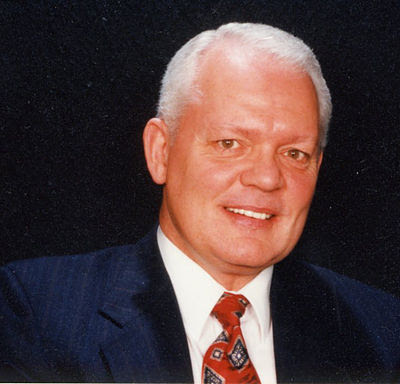 2016 Jerald D. Cockrell: 2016 Jerald D. Cockrell:
Dr. Jerry Cockrell is a psychologist, aviator, humorist and in-demand speaker. His ‘down-home’ style and hilarious anecdotes have charmed, educated and entertained audiences around the world. This popular aviation personality has an almost magical way of getting important information across to diverse audiences while captivating them with very real and very funny material.
Dr. Cockrell, a former Boeing 737 Captain, has over 20,000 flying hours including flying a Boeing 747-400 on international routes for an FAR 121 carrier. He holds a Ph.D. in Psychology and Education.Beginning his work in 1977, he was one of the earliest developers of Crew Resource Management programs. Since that time he has conducted more than 200 Crew Resource Management and Check Airman Safety Seminars for such air carriers as: United Parcel Service, Alaska Airlines, Air B.C., Air Ontario, Frontier Airlines, Overseas National Airlines, Mark Air, Reeves Aleutian Airways and Henson Airlines.
Present day Teamwork programs originated with the development of airline Crew Resource Management training. Working on the forefront, Dr. Cockrell has been leading the way with his unique CRM, human factor and teamwork programs, inspiring others to follow.Jerry has worked with corporate, government and aviation groups including Mobil Oil, Arco, all branches of the military, the US Coast Guard and the FBI.
Jerry has the honor of being one of the first speakers to make aviation safety presentations in all 50 states and internationally to England, Germany, Nigeria, Saudi Arabia, Zimbabwe, Mexico, Canada and Australia delivering over 3,000 safety and humorous presentations.
Cockrell is also a popular speaker with The Aviation Speakers Bureau, which has been providing keynote and motivational speakers since 1986. Click here for more information.
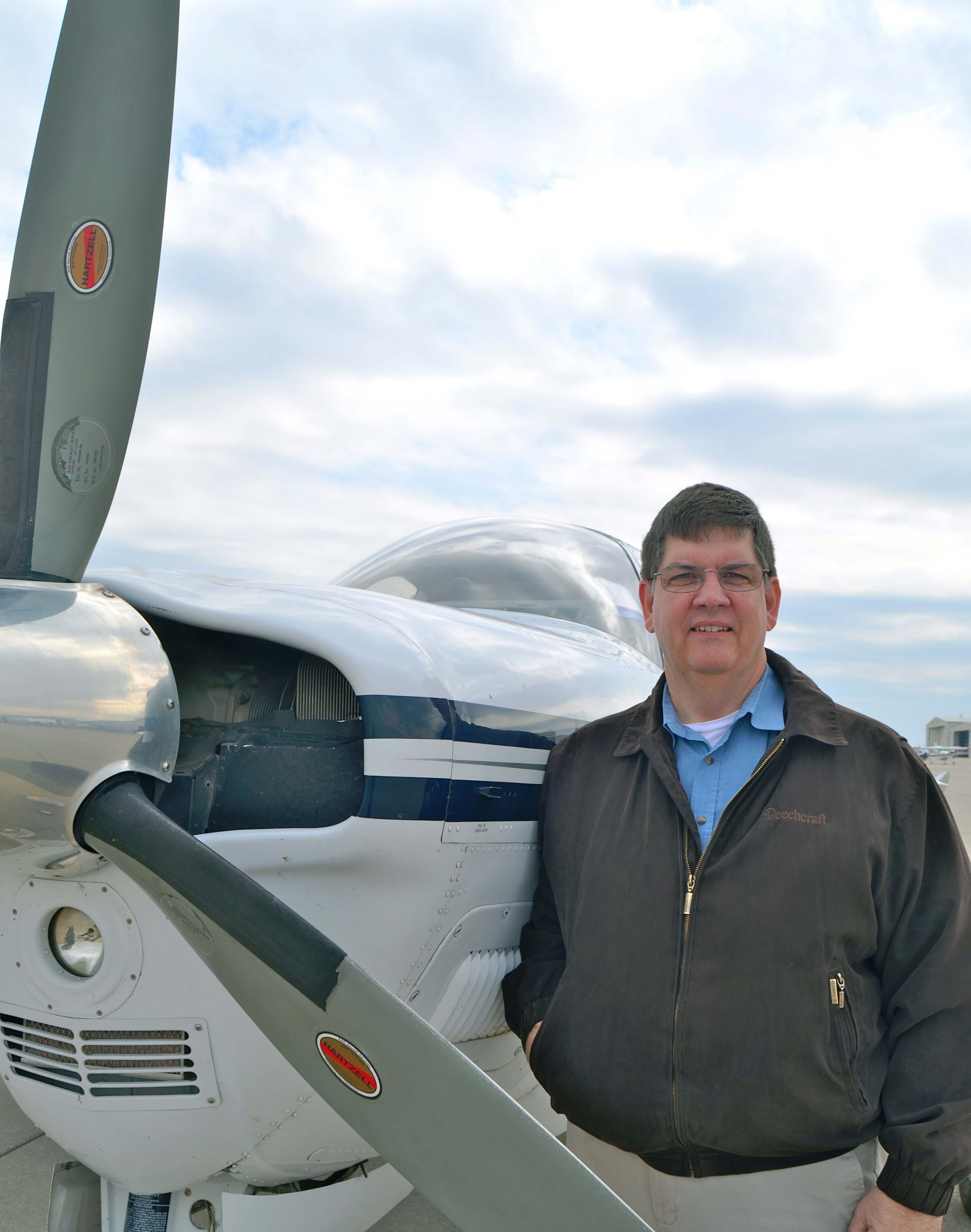 2015 Thomas Turner: 2015 Thomas Turner:
Tom Turner has been a flight instructor since 1988, after serving as an officer in the United States Air Force. He has served aviation in a variety of roles, most recently as Executive Director of the ABS Air Safety Foundation. In his tenure there, Turner developed programs such as the Beechcraft Pilot Proficiency Program and the ABS Flight Instructor Academy. These programs educate and standardize both instructors and pilots in the techniques of flying Beech aircraft, drawing on the collective experience of American Bonanza Society instructors over the past three decades.
In addition to his duties at ABS, Turner has been a FAASTeam Lead Representative since the program's inception, and earned the 2010 award as the Safety Team Representative of the Year, also serves on safety committees with NBAA, has presented forums at Sun 'n Fun and EAA AirVenture, and is a founder of EAA's Type Club Coalition, among other services to the community. He is also the author of three books: Weather Patterns and the Phenomena: A Pilot's Guide; Cockpit Resource Management: The Private Pilot's Guide; and Controlling Pilot Error: Checklists and Compliance, all published by McGraw-Hill. Turner also writes the FLYING LESSONS weekly safety e-newsletter available by free subscription at www.mastery-flight-training.com
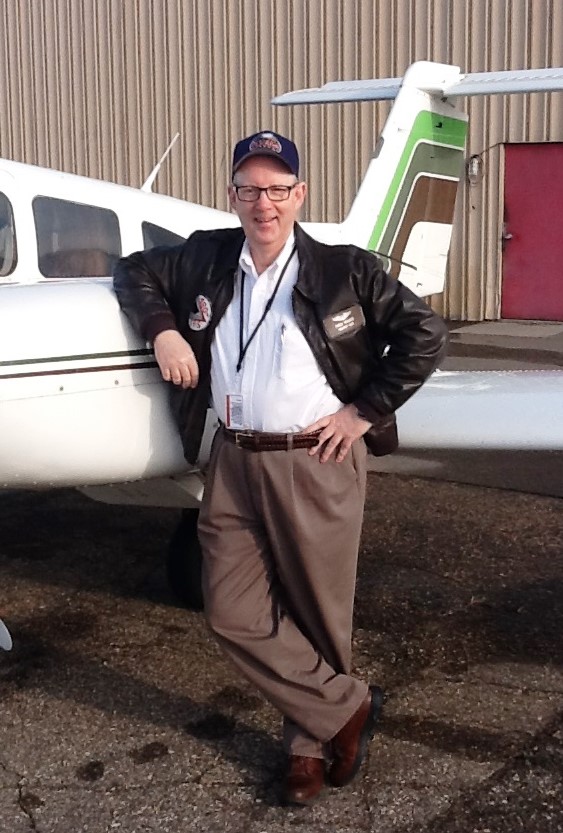 2015 Frederick Nauer: 2015 Frederick Nauer:
Fred Nauer has been a flight instructor since 1992, after serving as an officer in the United States Air Force. Bringing his experience as an Air Force F4E navigator to civilian aviation, Nauer has been a role model and mentor to younger and less-experienced instructors, leading by example and emphasizing safety in all areas of training. He is currently the chief instructor at Thunderbird Aviation in Eden Prairie, MN.
Nauer also worked at EAA on a project called Wild Blue Wonders. This program was designed to introduce young people to science, math, and creative writing through a variety of learning experiences also designed to foster an interest in aviation. He revised the program to make it available to teachers and toured the country promoting it. Although the program ended in 2004, he continues to receive requests from educators for materials so they can incorporate them into their classroom and after-school projects.
Working with Judy Rice, the navigation portion of Wild Blue Wonders was incorporated into Think Global Flight, a project designed for educators around the world to introduce science, technology, engineering, and mathematics (STEM) to their students. Using an around-the-world flight as the template, educators have the flexibility to introduce students to the subjects that interest them most, with partners at all educational levels from middle school to college.
While earning his Masters in Aerospace Education at Middle Tennessee State University, Nauer partnered with Embry-Riddle Aviation University to develop a program to educate FAA air safety inspectors in the transition to and use of glass cockpit avionics in general aviation.
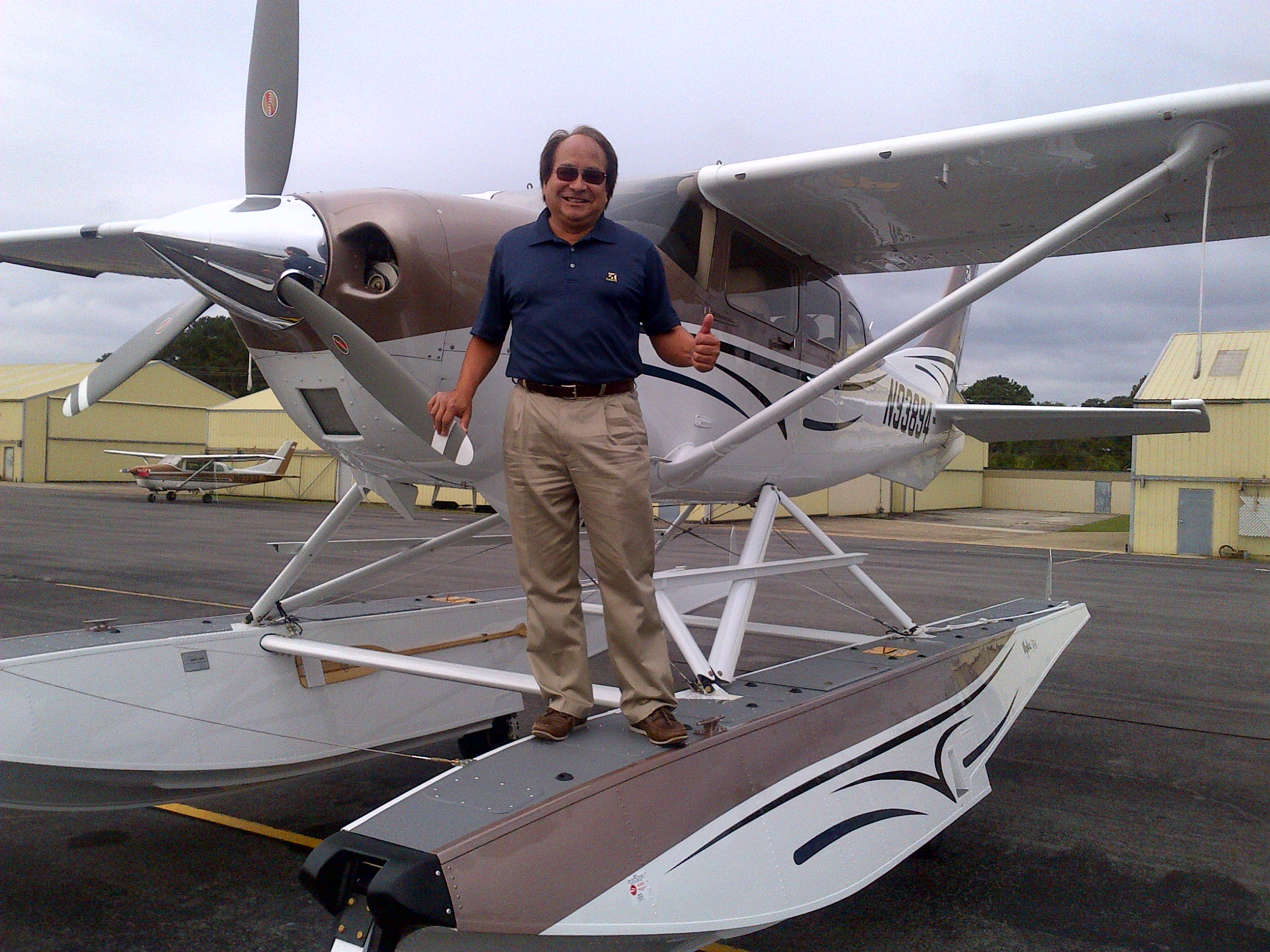
2014 Kirby V. Ortega:
With 30 yrs at Cessna Flight Operations, Kirby was responsible for all piston engine employee flight activities, demonstration and customer training. He is typed in six Citations. Kirby lead the development team, producing the FITS Accepted G1000 Transition Course. With more than 24,000 accident-incident-free flight hours including 14,000 hours as a flight instructor, he is an active flight instructor mentoring pilots in Caravans and Citation jets. Kirby works as chief pilot for Yingling Aviation’s aircraft management program flying a CJ3, CJ1+, Conquests and Caravans. He is also a FAA Designated Pilot Examiner conducting PVT, IR, COM practical exams as well as initial type ratings and FAR 61.58 recurrent checks in the Citation Mustang. Kirby was the 2002 National Flight Instructor of the Year.
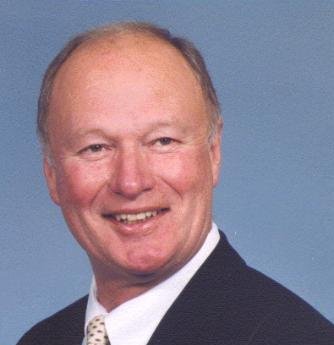 2013 Inductee Gregory G. Gorak: 2013 Inductee Gregory G. Gorak:
Greg is an 8,600 plus hour Airline Transport Pilot as well as a dynamic educator. Greg started flying in 1962 in a J3 Cub and received his Private Pilot's License in a 7 ECA with long time instructor Al Sabota and examiner Hugo Picco. At the time Greg was a member of the West Allis flying club which allowed him to get all his ratings starting with his private in 1963, commercial in 1966, and CFI in 1967. Greg was Chairman of the Career Pilot Program at Gateway Technical Institute for nine years and also taught for the National Association of Flight Instructors in 1976. The then founded Gaits Aviation Seminars, Inc. in 1977 and has been on the Presenter's Circuit for 43 years. Gaits Aviation Seminars has now graduated over 17,676 flight instructors. A common evaluation by the CFI's who take the Gaits Seminars is, "You made me want to instruct again". Greg flew charter for seven years with Scott Air Charter at Mitchell Field, accumulating thousands of hours in various turboprops including most Beechcraft King Air type aircraft the Beech Baron, Cessna 421, Shrike Commander, and Cessna Citation. During this time Greg had five children one of which (Mark) followed him into aviation getting his helicopter rating at Fort Rucker and is now a Colonel serving in the Pentagon. Greg utilizes his BA in Radio/TV Broadcasting and Announcing from Marquette University and his MS in Administration from the University of Wisconsin, as well as his Acting and Comic Opera Singing Career to provide a dynamic and fun presentation to professionals. Greg's Master thesis was titled. "The study of the effectiveness of the motion picture as an audio visual aid in the teaching of aviation".
Greg's experience as an aviation expert witness since 1976 and past Milwaukee alderman enhances his presentation with real life humorous anecdotes. The Federal Aviation Administration named Greg the Flight Instructor of the Year for the United States in 1975. The National Association of Flight Instructors awarded Greg Master Flight Instructor Status in 1998 and Greg has renewed every two years since. Greg has written a number of articles for publications including FAA Aviation News, Midwest Flyer, Professional Pilot, and NAFI Mentor.
Greg is a past member of the Wisconsin Aerospace Education Committee, a current Master Flight Instructor with NAFI, Captain and CFI check pilot in the Civil Air Patrol (specializing in G-1000 glass cockpit), and current member of EAA and AOPA.
Greg's favorite pastimes are boating, riding his motorcycle, playing the organ, racquetball, and tennis.
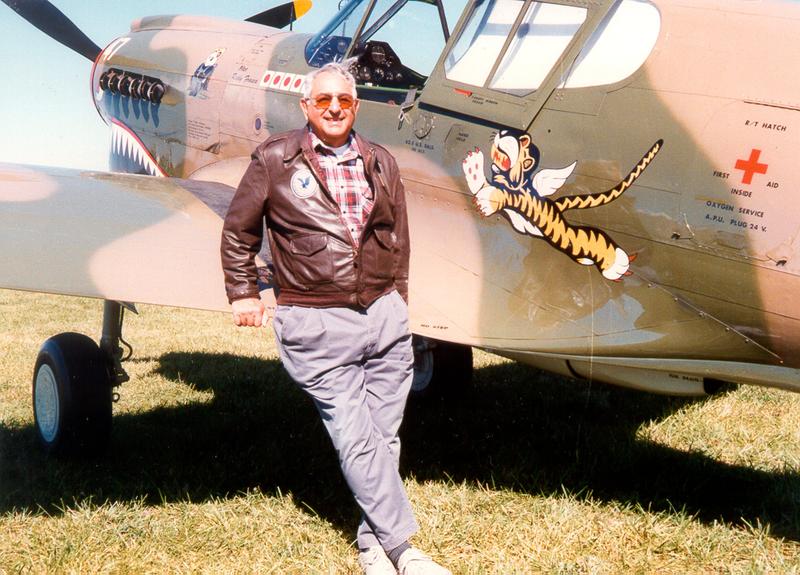 2012 Inductee Rudy Frasca: 2012 Inductee Rudy Frasca:
Rudy Frasca was born on April 19, 1931, the fourth child of Italian immigrants. He began taking flying lessons at the age of 14 and soloed shortly thereafter. In 1949, Rudy joined the Navy and was stationed at Glenview Naval Station, where he worked as a flight instructor teaching pilots on the early Link trainers. After the Korean war, Rudy left the Navy to attend the University of Illinois, where he did research in Aviation Psychology and honed his interest in the field of flight simulation. In 1958, putting together everything he had learned in the Navy and the University, Rudy built his first flight simulator at home in his garage and Frasca Aviation was founded (the name later changed to Frasca International to reflect the emerging character of the business). Over the years, Frasca simulators have developed a reputation for realism, reliability and affordability. As the number and reputation of Frasca simulators in use grew, the name “Frasca” began to be used as a generic term for simulators, becoming in effect a household word in the aviation training community. Although the company has grown dramatically, Rudy’s original mission remains the same: to design and manufacture high quality and reasonably priced flight simulators for training pilots worldwide. As the company grew, so did Rudy's collection of antique aircraft. In 1968 Rudy purchased his first Warbird, an FM2 Wildcat which became the foundation for the Frasca Air Museum which now houses over 30 aircraft including a P-40, Spitfire, Fiat and others. The museum is housed at Frasca Field (formerly Illini Airport) which Rudy purchased in 1980. Rudy added a 4000 concrete runway and has purchased several hundred acres surrounding the airport for future development.
Rudy is active in many areas of aviation and has held every office in the Warbirds of America organization. He has been a member of the Experimental Aircraft Association (EAA) since 1956 and has loaned several of his aircraft to the EAA museum so that the general public can enjoy them. He has received numerous awards both for his personal efforts and for Frasca International’s success in the simulation industry. In August of 2000, Rudy was chosen by the Illinois Department of Transportation to represent the state of Illinois at the National Aviation Hall of Fame Exhibit and Learning Center in Dayton, Ohio.
2011 - no inductee
2010 - no inductee
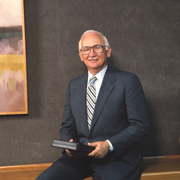 2009 Inductee Paul Sanderson: 2009 Inductee Paul Sanderson:
Paul began his career as an aviation instructor in the Navy during WWII. He went on to start his own ground school, offering pilot rating courses from which the Sanderson Training System was developed. By 1968, more than 3,000 schools were using the Sanderson Courses in their flight training. The system helped make aviation ground instruction accessible and affordable. His programs and work became part of the basis for the Jeppesen flight training products that are used throughout the world in aviation education.
Fifty years later, Sanderson’s basic training approach is still being used with success. His involvement in aviation education has been attributed with helping significantly grow the pilot population in the U.S. The result of the programs that started with Sanderson was the training of millions of pilots.
His company, Sanderson Films, was sold to Times Mirror Company, which eventual merged with Jeppesen to form Jeppesen-Sanderson, now owned by Boeing. Jeppesen continues Sanderson’s legacy of providing pilot training and reference materials. Sanderson has been recognized by the National Aeronautic Association as an Elder Statesman of Aviation for his contributions to the aviation world.
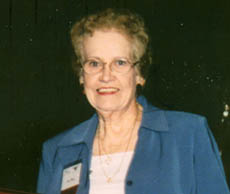 2008 Inductee Joan Mace: 2008 Inductee Joan Mace:
Joan has 65 years of aviation experience and started flight instructing in 1946 at Ohio University Airport in Athens, Ohio. Her strong interest in aviation began at Curtiss-Wright where she was responsible for checking landing gear, rivets, anf flaring panels. Later, the U.S. Army Air Forces accepted her for Women Air force Service Pilots (WASP) training.
After the war, Mace found her commercial and instructor certificates were all she needed to become the only woman among 22 instructors at Ohio University Airport. As the first female chair of a university aviation department, she has opened doors for women in aviation, helping create a four-year bachelor’s degree program in airway science in the College of Engineering at Ohio University and establishing an aviation advisory board at the university.
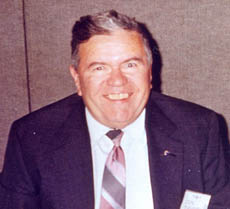 2008 Inductee Charles Fairbanks: 2008 Inductee Charles Fairbanks:
Charles became a flight instructor in 1947 and started Cardinal Air Training and the Conference of Flight Instructors (CFI) at Lunken Airport in Cincinnati. Fairbanks attended the original AOPA and Helicopter Association International (HAI) seminars. He is also an EAA flight adviser. With flight experience dating back to 1944 and including over 27,000 flight hours, he worked with Sporty’s in producing its first training video, “So You Want to Fly Helicopters.” As a member of EAA, AOPA, NAFI, Freemasons, Shrine, Eastern Star, Silver Wings, Quiet Birdsmen, the Professional Race Pilots Association, and HAI, Fairbanks has accomplished many things in the field of aviation.
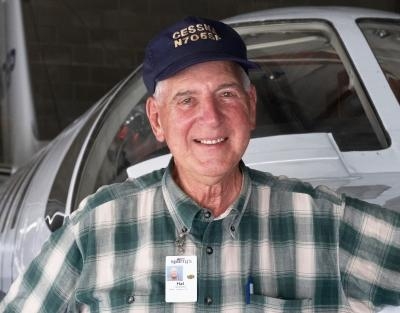 2007 Inductee Hal Shevers: 2007 Inductee Hal Shevers:
Hal Shevers founder of Sporty’s Flight Academy and Sporty’s Shops. Because of Hal’s tireless pioneering efforts, Sporty’s now delivers a variety of aviation educational services to tens of thousands of students around the world. He established The Sporty’s Foundation, created to support national educational initiatives directed toward youth. Through its support programs for young people, the foundation encourages a wide range of aviation career choices including avionic technician, engineer, mechanic and pilot. Hal Shevers has operated this world-renowned flight school while supporting youth aviation programs throughout the nation. A flight instructor for nearly fifty years, his commitment to excellence in education is unsurpassed.
2007 Inductee Wolfgang Langewiesche:
In 1939, Wolfgang Langewiesche’s gift for writing led him to a position with air facts magazine, and his first book, I’ll take the high road, promptly became a bestseller. in 1944, he published his most widely distributed work, Stick and Rudder. The basic facts about flying set forth in stick and rudder have withstood the test of time- more than 200,000 copies of the book had been sold by 1990, and it continues in print to this day. His role as a flight instructor, however, and his influence on the flight instruction community, is most pronounced in the articles he wrote for Harper’s magazine and Reader’s Digest during the later 1940s and 1950s.
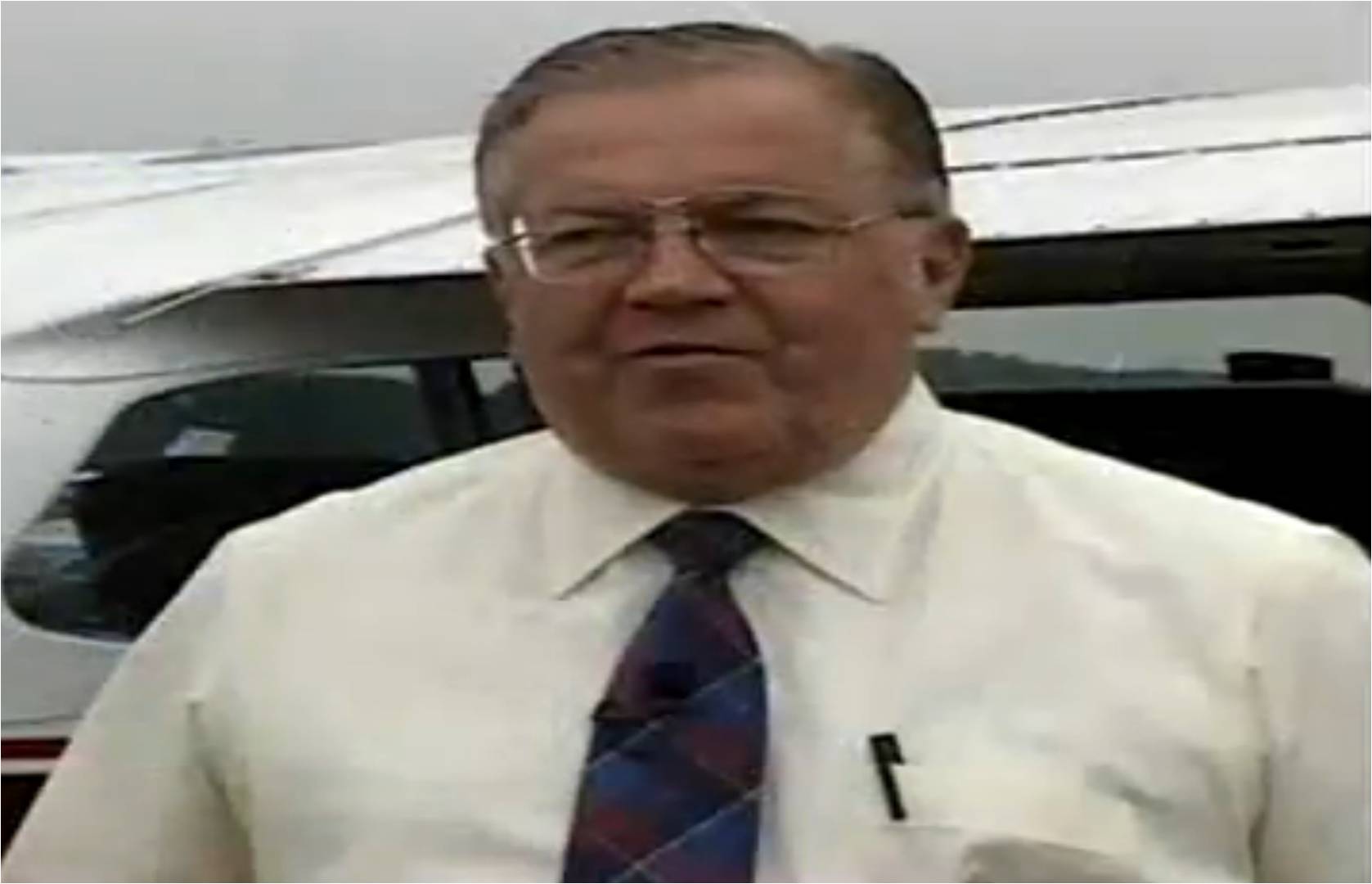 2006 Inductee Al Passell: 2006 Inductee Al Passell:
Among the most prolific Pilot Examiners of all time, Al Passell dominated flight training in the central United States from the 1960s onward. In the classroom and in the cockpit, his concise lessons remain etched in the minds of countless aviators, from local pilots to airline captains.
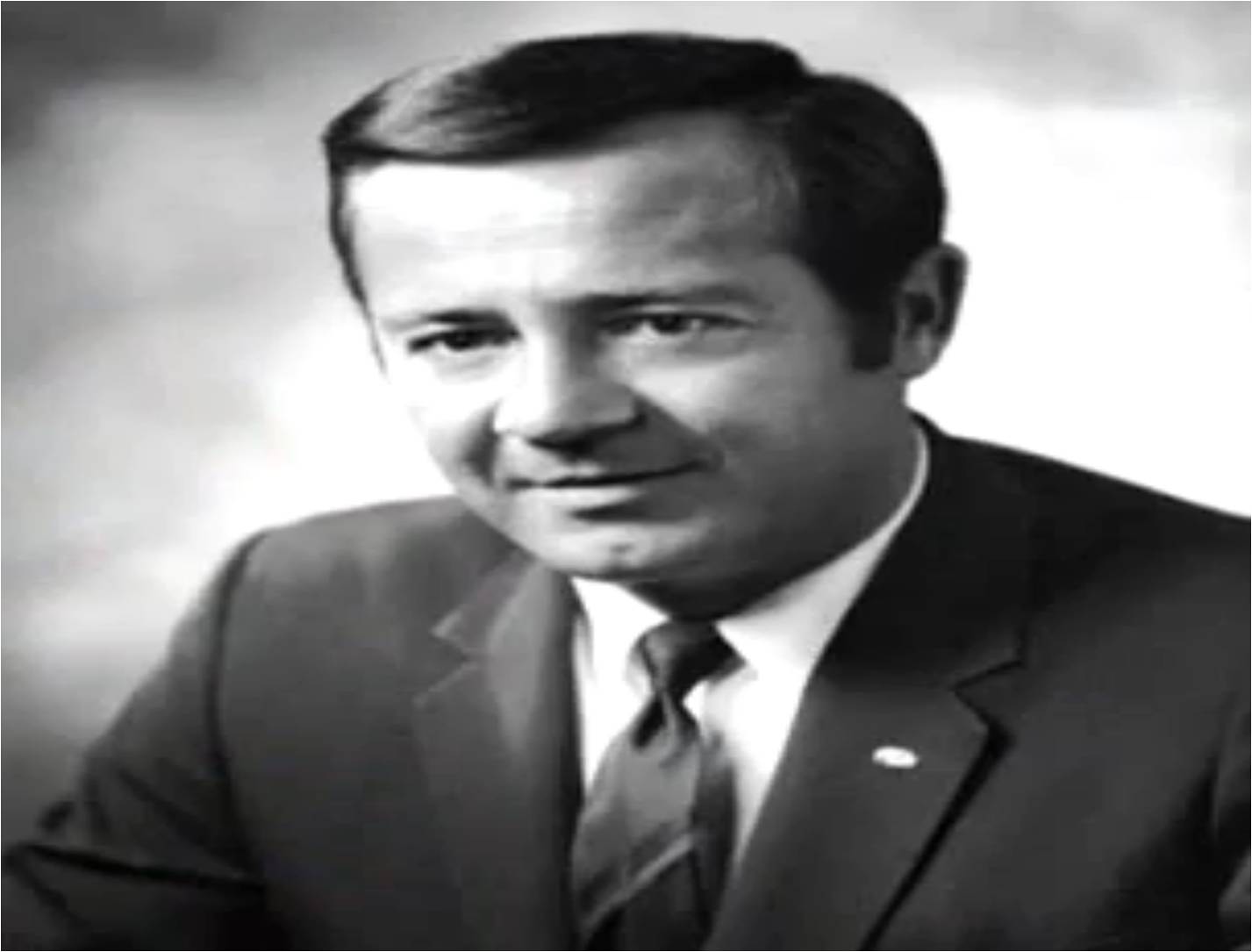 2006 Inductee Ralph Nelson: 2006 Inductee Ralph Nelson:
Ralph Nelson (NAFI #4), founding father and Vice President Emeritus of the National Association of Flight Instructors (NAFI), had accumulated more than 10,000 hours in his logbook by the time he passed away in 2006. A safety crusader and innovative leader, he created and promoted A.M. Aviation Weather on public television as well as AOPA's Weekend Ground School. He also served as leader of the Aviation Safety Foundation and Flight Safety Foundation for nearly two decades. One of his lasting legacies is the General Aviation Awards program and the Certificated Flight Instructor of the Year award.
2005 Inductee Howard Fried:
Howard Fried has logged some 40,000 flight hours in over 60 year of flying. He started training pilots in the US Army Air Corps during WWII, and moved to general aviation after V-J Day. In 1964 he established Drake Aviation, an active flight school with several locations in the Midwest. He has been a lifelong crusader for aviation safety and proficiency. He was one of the first FAA Designated Examiners in 1978, and conducted more than 4,000 check rides. Fried has also written numerous books and articles, sharing his insight to flight safety.
2004 Inductee J. Vernon Ricks:
Ricks is the founder of The Airmen, an organization dedicated to promoting safe formation flying; he established the organization in 1972. A pilot for over fifty years, he developed innovative techniques for teach formation flying that have come into wide acceptance. He has instructed in gliders, ag planes, biplanes, and seaplanes, as well as the more familiar single- and twin-engine aircraft.
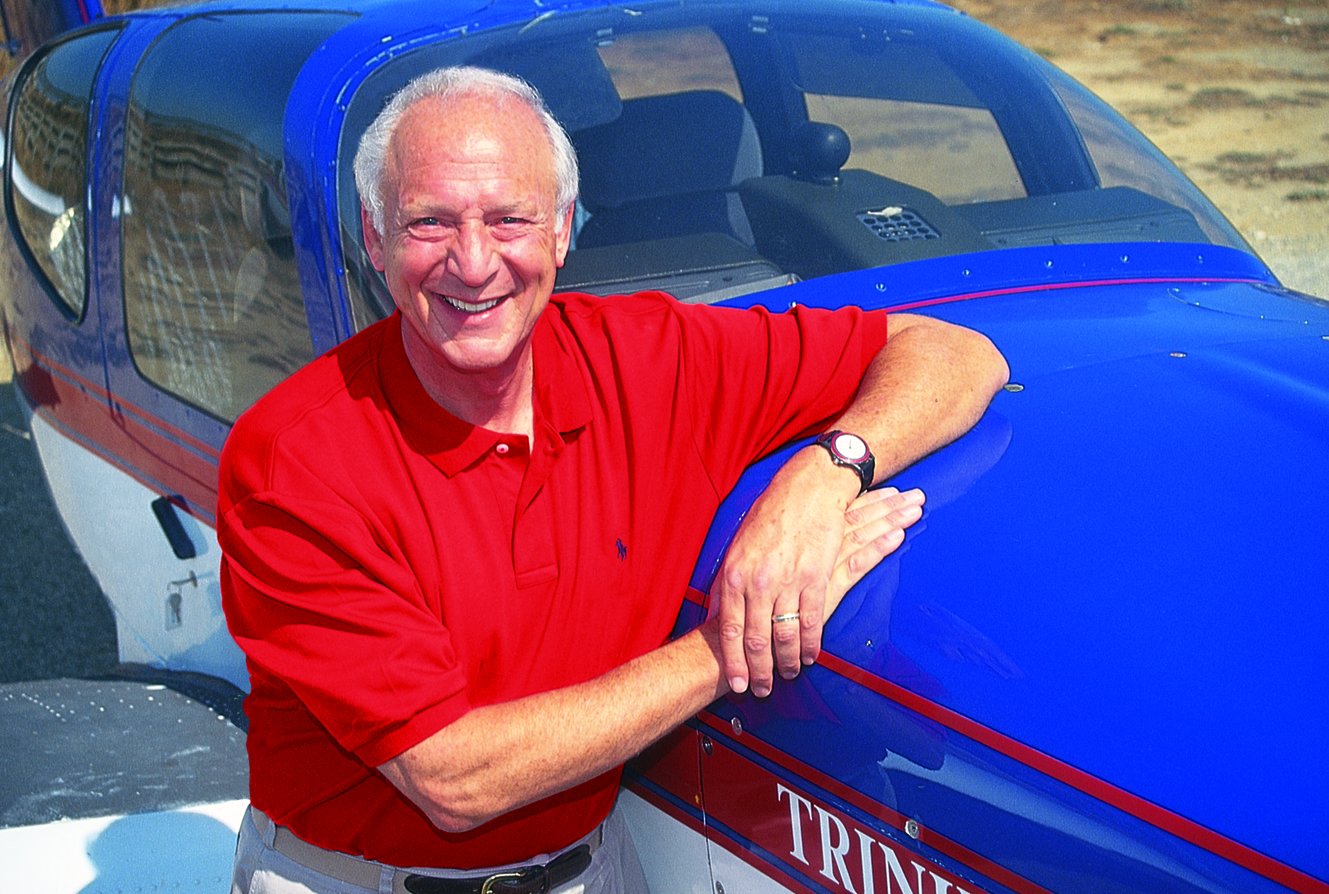 2003 Inductee Barry Schiff: 2003 Inductee Barry Schiff:
Schiff is an award winning journalist and author, who is well known to flying audiences for his numerous books and more than 1,000 articles published in 90 magazines. Many of his articles discuss personally developed concepts, procedures, and techniques that have received international acclaim. Barry has more that 26,000 hours logged in 272 types of aircraft. He holds five world speed records and has received numerous honors for his many contributions to aviation safety.
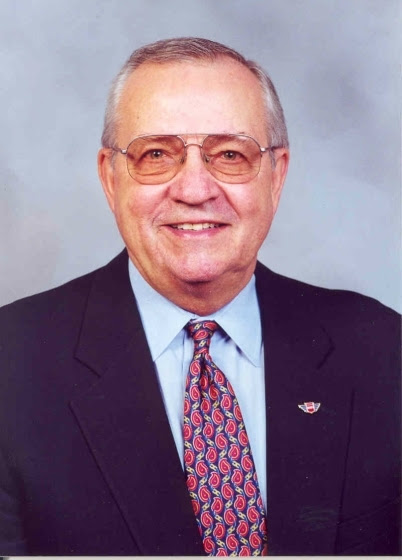 2002 Inductee Jack Eggspuehler: 2002 Inductee Jack Eggspuehler:
Jack Jay Eggspuehler, pilot, educator, restaurateur and founder of the National Association of Flight Instructors, passed away April 30 with his three sons at his side. He was 86 years old.
He was born on March 12, 1930 in Des Moines, Iowa. He was a member of the Linworth United Methodist Church for 56 years. He graduated from Rock Island High School in 1948. He earned his Bachelor of Science degree from the University of Illinois in 1954 and continued his education there with a Masters of Education. While in Champaign he met his wife, Joan Margaret Bye.
He began his flying career in the U.S. Air Force during the Korean War from 1951-1953, and served a long tenure as a flight instructor and professor of aviation at The Ohio State University before retiring from there in 1980. While at OSU, from 1958-1980, he was the president of The Ohio State University Faculty Club and helped raise $11 million for the University's Endowment Fund. He also founded several iconic restaurants in Ohio, and had a long career in banking. He was a longtime director of Heartland Bank, and was a proud member of the Quiet Birdmen. He also had a home in Cape Coral, Florida.
Eggspuehler was a part of the U.S.-Soviet Pilot Exchange in 1972, 1976 and 1978 leading a group of flight instructors to meet with their counterparts in the early days of Détente.
In 1967, Eggspuehler led a small group of aviation professionals to create the National Association of Flight Instructors (NAFI) with the intent of providing national recognition of the professional flight instructor. He served as the organization's president for 30 years. After his retirement from NAFI's Board of Directors in 2000, Jack was named president emeritus of the organization.
In addition to his long association with NAFI, Eggspuehler served as president of Aerosafe Inc., a consulting firm working with defense attorneys in aviation lawsuits. Aerosafe, which was founded in partnership with his wife Joan, who predeceased him in 2008, also provided worldwide correspondence courses primarily to help military personnel pass their FAA examinations.
Eggspuehler was the recipient of many awards and honors in his distinguished career. He was a member of the Flight Instructor Hall of Fame. He was the recipient of the Aviation Week & Space Technology Distinguished Service Award, for "distinguished service in achieving safer utilization of aircraft," and was also recipient of the EAA's Chairman's Award.
The National Aeronautic Association selected Eggspuehler in 2000 to receive its prestigious "Elder Statesman of Aviation Award." In announcing that award, NAA said: "Mr. Eggspuehler's name is synonymous with a lifelong pursuit of commercial and general aviation safety through education." Other awards included the Flight Safety Award for Distinguished Service for achievement of safer utilization of aircraft, the University Aviation Association Wheatley Award in recognition of outstanding contributions to aviation education, and the Aircraft Owners and Pilots Association (AOPA) Meritorious Award for outstanding contributions to flight safety.
Eggspuehler was one of the first FAA Designated Pilot Examiners to be granted authority to conduct initial flight instructor practical tests. He was also among the first to be appointed as an FAA Designated Written Test Examiner. He also served as chairman of the national panel to review pilot training and certification on the FAA Designated Pilot Examiner's Committee.
In nominating him to the Flight Instructor Hall of Fame in 2002, Sandy and JoAnn Hill wrote: "He has never received industry recognition for his greatest contribution to aviation -- his mentoring. We have known Jack for 25 years. Throughout those years, he has been a mentor to us and to so many others! His deep commitment to expanding the base of aviation is evidenced by giving so freely of himself to help create opportunities for young people interested in careers in aviation. From him, legions of people ranging from beginning student pilots to aviation professionals with thousands of hours have learned about the world of flight. As a result of their associations with Jack, these people also learned firsthand the value of a sense of humor as well as the qualities it takes to be a truly effective educator."
In 2015, the Board of Directors of the National Association of Flight Instructors honored its founder with its newly created Lifetime Achievement Award. At that time NAFI Board Chair Bob Meder said: "... he has helped raise the professional standards for the flight instructor. Perhaps more important, he has provided a venue that, for nearly 50 years, encourages instructors to educate each other, helping make aviation better for all. This award is merely a small token for the true appreciation we have for Jack's efforts."
NAFI's Jack J. Eggspuehler Service Award, named in his honor, is presented annually to an individual or organization making a significant contribution to flight instructors, flight instruction or aviation education.
He was chairman of the Department of Aviation at The Ohio State University and after retiring was Faculty Emeritus in Aerospace Engineering at the Center for Aviation Studies at The Ohio State University College of Engineering.
Eggspuehler co-authored two books, "Studies of Pilot Performance in the Flight Environment," published by Ohio State University, and "Study to Determine the Flight Profile and Mission of the Certificated Private Pilot," published by the FAA.
An accomplished pilot and teacher, Eggspuehler held the following FAA certificates and ratings: Airline Transport Pilot, Commercial Pilot, Multiengine Land, Single-engine Land and Sea, Rotorcraft-Helicopter and Private Glider, as well as Flight Instructor/Airplane Single and Multiengine and Instrument. He also held a Ground Instructor Certificate with Meteorology and Radio Navigation Certificates.
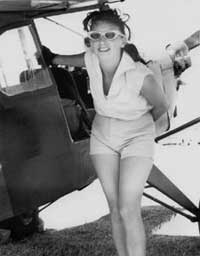 2001 Inductee Amelia Reid: 2001 Inductee Amelia Reid:
Reid, who died in March 2001, taught more than 4,000 students to fly after beginning her California flight school out of the trunk of a 1959 Ford. Among her students was legendary air show pilot Sean D. Tucker. Over 60 years, she logged more than 55,000 flight hours.
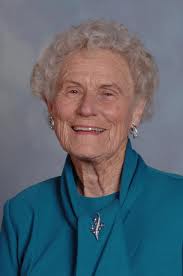
2000 Inductee Iris Critchell:
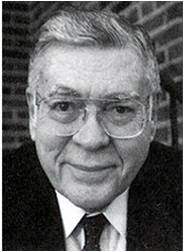
2000 Inductee Ken Medley:
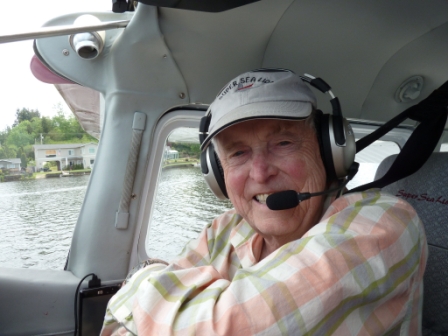 1999 Inductee Anders Christenson: 1999 Inductee Anders Christenson:
Anders Christenson was recognized for this honor because of his dedication to introducing aviation to the youth of his area. He initiated an aviation course where he taught at Edina Public High School, in Minnesota. He introduced more that 650 students to be at the controls of a Piper PA 150. In his last year before retirement, he had 21 pilots in the student body of 1650. In addition to teaching he served Minnesota as a Designated Pilot Examiner for forty years. In 2006 he and his wife moved to Maple Valley, WA, to be near their son. He still continues to serve as a Flight Instructor and on May 11, 2013 he attained the Golden Goal of having flown 30,000 hours. He humbly quotes his hero, General Doolittle, "I'd never be so lucky again".
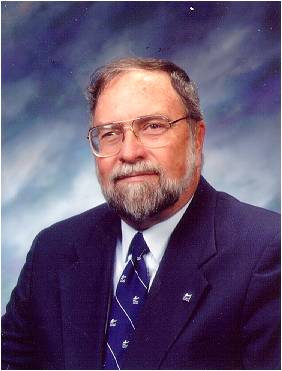 1999 Inductee Dr. Dale DeRemer: 1999 Inductee Dr. Dale DeRemer:
Dr. DeRemer is an ATP pilot with more than 20,000 flight hours and is also a Gold Seal Flight Instructor and was Field Director, Central Northwest region for the International Seaplane Pilot's Association. In 1998 he was named the 15th CFI to receive the NAFI Master CFI designation by the National Association of Flight Instructors. The Seaplane Pilots Association named Dr. DeRemer Seaplane Pilot of the Year, 1998. In 1999, The National Association of Flight Instructors and The Experimental Aircraft Association inducted him into the CFI Hall of Fame at Oshkosh, WI. He is the author of six books on aviation subjects, all of which are well recognized around the world.
After many years as a consulting agronomist, irrigation system designer, and mine tailings chemist/reclamationist, Dr. DeRemer flew as chief corporate pilot for three companies, flying single and multiengine piston, multiengine turboprop and helicopters. In 1975 he went into semi-retirement and traveled to many parts of the world in his sailboat then, in 1981 started a new career teaching aviation. He has been known to say "I will probably never get any closer to heaven than being able to teach bright, goal-oriented young people about what has been my primary, life-long hobby."
At the University of North Dakota, Center for Aerospace Sciences, Dr. DeRemer has taught Aerodynamics, Aircraft Systems, Avionics, International and Long Range Navigation, General Aviation Operations and Management, Seaplane Certification and was the founding advisor for the Wilderness Pilot's Association, an award winning university student organization. During the summer months, Dr. DeRemer conducted advanced wilderness seaplane courses into the Boreal forests and Arctic tundra of northern Canada. He also taught those courses in the equatorial jungles of the Americas.
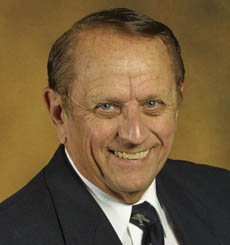 1999 Inductee Verne Jobst: 1999 Inductee Verne Jobst:
Verne Jobst has flown aircraft from B-17 bombers to 747 transports, as well as balloons and gliders during his 50-plus years as a pilot. He soloed at age 16 in an Aeronca Chief and got his first airline job in 1951 flying DC-3s for Capital Airlines. Capital merged with United Airlines in 1961 and Verne became a part of that company. He has also flown as a corporate pilot for such companies as U.S. Steel, C&O Railroad, and Blannox.
Active in the sport aviation world, Jobst was president of the International Aerobatic Club (IAC) from 1973-78. He had previously served as editor of the IAC publication, Sport Aerobatics. As chief pilot for the 1977 Lindbergh Commemorative Tour, he logged hundreds of hours behind the controls of the EAA Air Museum’s Spirit of St. Louis replica.
Among his 40,000 logged flight hours, more than 11,500 were instructional hours, and he was inducted into the Flight Instructors Hall of Fame in 1999. Jobst has also served as air show director at EAA AirVenture Oshkosh and piloted a wide variety of historic aircraft including EAA's B-17 Aluminum Overcast.
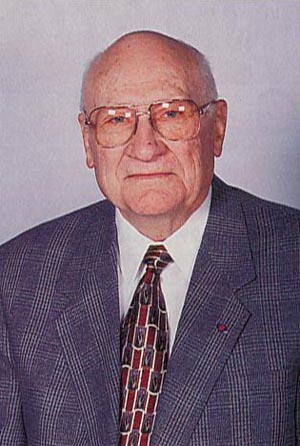 1998 Inductee Marvin Easter: 1998 Inductee Marvin Easter:
Marvin Easter is a native of the Waterloo/Cedar Rapids IA area and grew up completely fascinated with aviation. One of his childhood heros was the great Johnny Livingston, the father of the Clipwing Monocoupe, once the largest Waco dealer and a local resident. Marvin earned his BA degree from Iowa State Teachers College in 1949 and learned to fly while working as an Iowa high school teacher. After earning his Private and Commercial pilot licenses in a Luscombe 8A, he became a certified flight instructor and taught flying at the Waterloo Flying Service.
Later, Marvin joined the Ohio State University Department of Aviation and would spend the next 30 years teaching ground and flight courses. He also had the opportunity to take part in numerous important research studies over the years that have been imperative to the growth of aviation. He retired in 1979, but his passion for airplanes and flying did not end there. He opened a small FBO and rebuilt such aircraft as a Cessna 140 and Piper PA-11, built a Starduster Too and, most recently, restored a prize winning Waco 10 he owns in partnership with several friends.
In 1984 flight instruction lured Marvin back to the classroom. After five years of retirement, he returned to Ohio State's Department of Aviation and is still instructing students there today.
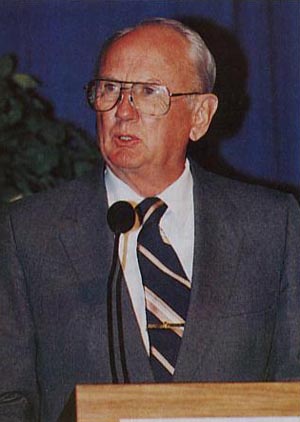 1998 Inductee Bill Kershner: 1998 Inductee Bill Kershner:
William Bill Kershner began his flying career at the age of 15, and received his Navy wings eight years later. After flying Corsairs off the carrier Philippine Sea, he became a navigation and instrument training officer, a jet transition training officer and a chase pilot in F9F-6 Cougars.
After his military service, Bill worked at Piper Aircraft, demonstrating airplanes to various military commands, and eventually became the supervisor of experimental flight testing at Piper.
In 1969, after publishing his first book, Advanced Pilot's Flight Manual, Bill established an aerobatic and advanced instruction school. Over 500 students have completed these aerobatic courses.
In addition to his numerous flight manuals, Bill is a seasoned writer for magazines such as Private Pilot, Flying and Skyways and shares his skills with others through lectures and spin demonstrations at the University of Tennessee Space Institute, the Naval Air Test Center, the FBI Academy and the Smithsonian Air and Space Museum. In 1992 he received the FAA's National Instructor of the Year award.
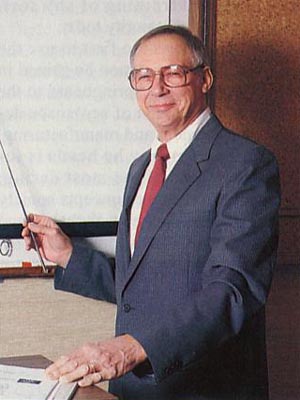 1998 Inductee Joe Vorbeck: 1998 Inductee Joe Vorbeck:
Joe Vorbeck, known as Mr. Instrument Flying to his friends, was highly respected among his students and peers for his dedication and voracious appetite for aviation knowledge.
A native of Rochester, NY, Joe joined the Marines at 17 and returned home after four years to obtain an engineering degree at Cornell University. He then joined the Army as a 2nd Lieutenant and served for five years as a paratrooper and expert at troop insertion and supply. Too tall at 6' 7 to fly in the military service, he learned to fly on his own and obtained a flight instructor rating.
After teaching aviation at the University of Illinois, Joe accepted a position as Chairman of General Aviation Technology at Purdue University in 1964. While at Purdue, he implemented the weekend seminars program. These important courses provided private, instrument and commercial pilots with three days of the latest aviation instruction and training.
Joe co-founded the National Association of Flight Instructors and was NAFI's first president. In 1987 he moved to Ohio where he co-founded Sporty's Academy, produced educational aviation videos and helped establish the University of Cincinnati's flight training program. Now deceased, his name lives on at that university in the form of the Joe Vorbeck Aviation Scholarship Fund.
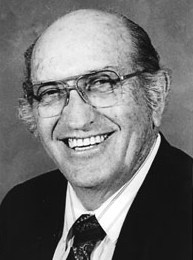 1997 Inductee James “Pete” Campbell: 1997 Inductee James “Pete” Campbell:
Pete Campbell first learned to fly at Gill-Dove Field in Martin, Tennessee after serving in an Army Reserve Infantry Unit. He subsequently transferred to the Army Air Force to train as a glider pilot. Campbell entered the Army Air Force Aviation Cadet program in 1943 and became a Commissioned Officer in January 1944. He flew B-24's in the South Pacific, tallying 56 combat missions with the 380th Bomb Group, 5th Air Force. Pete returned home after the war and opened a small FBO at Union City Airport. In the 50's he was with the training division of California Eastern Airways contracted to train pilots for the Air Force. Campbell joined the Federal Aviation Administration in 1960 as a field inspector. His assignment to the FAA Academy in 1964 lead to the creation of what is considered to be one of the most beneficial safety programs in FAA history. Troubled by the dismal safety record of Certified Flight Instructors across the entire nation, Pete Campbell created teams of FAA Flight and Ground Instructors who traveled the entire country implementing what became "Flight Instructor Refresher Courses", still in place today. Over a period of about seven years and more than 200 courses, training more than 16,000 flight instructors, the accident rate among flight instructors was reduced by more than 50%. In 1971 Pete Campbell created another successful safety initiative by organizing the FAA's "Accident Prevention Program". Also part of his continuing legacy, it placed FAA Accident Specialists in each of the nation's eighty-five General Aviation District Offices, now called FSDO's.
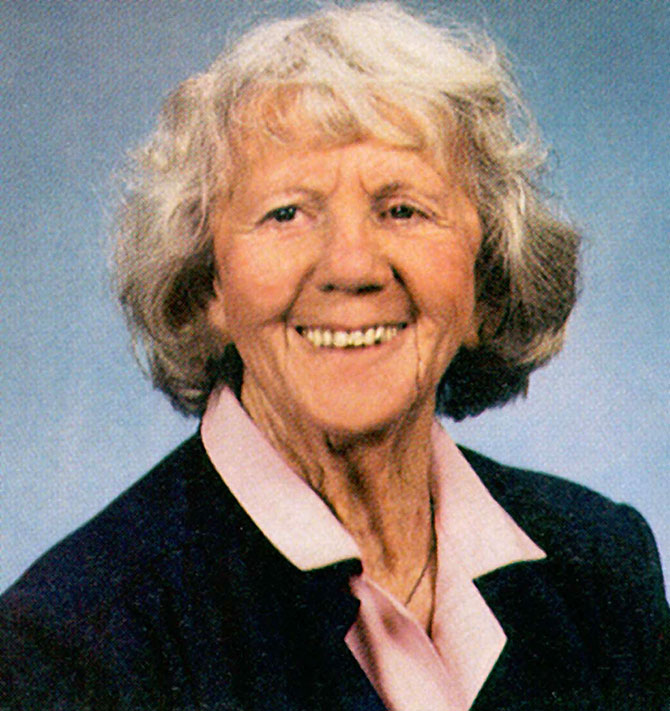
1997 Inductee Evelyn Bryan Johnson:
Evelyn was born November 4, 1909 in Corbin, Kentucky, the oldest of three children. She was five years old when her father, a conductor for the railroad, moved his family to Tennessee.
A few days after Pearl Harbor, WJ joined the Army Air Corps and left Evelyn to take care of the business. While looking for a hobby she took her first flight lesson on October 1, 1944.
Johnson soloed on November 8, 1944 in a Piper J3Cub with the minimum 8 hours required before the instructor jumped out leaving the controls to her. She says she’s glad nothing happened because she really didn’t know a lot at the time.
Johnon earned her private pilot certificate the following June, added a commercial certificate in 1946 and became a flight instructor in 1947. That afternoon she instructed her first student. She was later named a designated FAA examiner in 1952.
She also became one of the first female helicopter pilots and was involved in the Civil Air Patrol. Known as Mama Bird, Johnson sees problems with today’s “check rides”. She says the instructors don’t teach students how to read a map. Other problems are radio navigation and stalls. Some instructors are afraid to have their students get the experience of stalling a plane.
Johnson’s contributions to general aviation go beyond flying and flight instruction. She owned a fixed-base operation, Morristown Flying Service – for 33 years. And recently she celebrated 54 years of service at Moore-Murrell Field in Morristown, Tennessee.
Johnson served on the Tennessee Aeronautics Commission for 18 years and was chairman for 4 of those years. She helped allocate state and FAA block grant funds for airport improvement projects throughout the state.
For 19 years, Johnson was a Cessna dealer, so she flew and sold just about everything Cessna made. She owned many airplanes, ranging from an Aeronca Champ to the Super Cruiser, but adds she was often too busy with her flight school to fly her own planes.
From 1951 through 1954, and again in 1960, Johnson enjoyed participating in Powder Puff Derbies. It was 1955 B.C. – before Castro, she says. She flew in an international women’s air race from Washington to Havana, Cuba.
She has stacks of scrapbooks and three dozen or so plaques and awards. She was the FAA’s Flight Instructor of the Year in 1979. She has been inducted into the Women in Aviation Pioneers Hall of Fame, the Kentucky and Tennessee Aviation Halls of Fame. Johnson is most proud of a small plaque that marks her 1997 induction into the Hamblen County Woman Hall of Fame in Morristown. She says the organization chooses inductees who make good role models for girls.
In 55 years of flying, she’s logged close to 57,635 and ¼ hours. That’s equivalent to almost seven years aloft.
Evelyn Bryan “Mama Bird” Johnson age 102, died May 10, 2012 in Jefferson City, Tennessee.
1997 Inductee Bernie Geier:
|